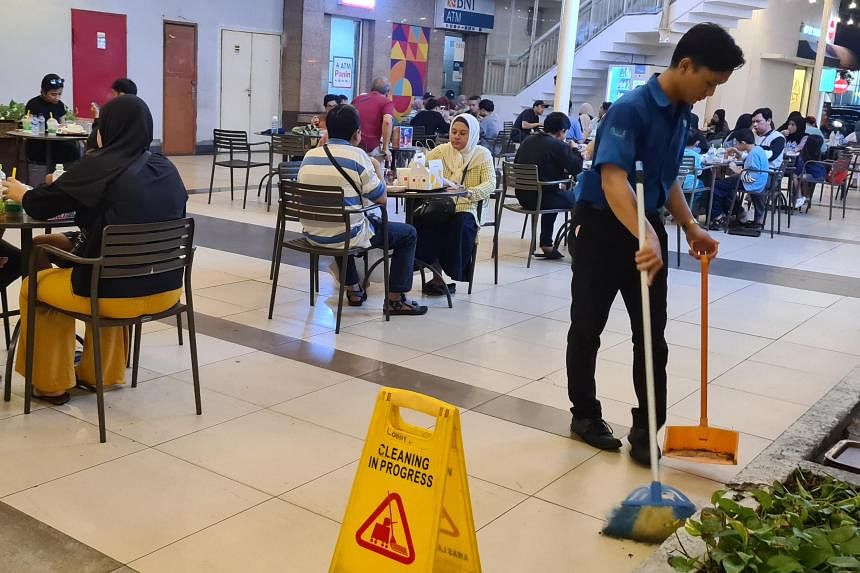JAKARTA – Years of work at a factory enabled Ms Sari Sartika Dewi to enrol as a law student at a private university in Karawang, West Java, in 2018.
Successfully juggling her full-time job and studies, she earned a bachelor’s degree in 2022. With it, the 34-year-old divorcee hopes she can find a more decent job.
However, finding a role that suits her new qualifications may prove to be elusive in Indonesia, which, despite being South-east Asia’s largest economy, faces an uphill task in providing its young people with quality employment.
Ms Sari’s factory employer, a foreign shoemaker that produces sneakers for a global brand, pays her 5.2 million rupiah (S$440) a month, similar to the region’s monthly minimum wage. The amount also covers social security.
“I consider my current workplace a stepping stone. I want to make a leap, but don’t know how,” Ms Sari told The Straits Times. “I am aware that thousands of people are seeking jobs. This makes me think twice about moving.”
Unlike many of her Indonesian peers, Ms Sari holds a “middle-class” job, which pays a wage that can provide middle-class consumption and offers benefits and social security protection.
In 2023 prices, middle-class jobs pay around 5.2 million rupiah monthly, according to Dr Maria Monica Wihardja, visiting fellow at the ISEAS – Yusof Ishak Institute and a former World Bank economist.
Providing middle-class jobs is a challenge for Indonesia as it seeks to move up from an upper middle-income economy to a high-income country, the Washington-based World Bank says.
Many young people in Indonesia often find themselves trapped in menial jobs after completing their education.
At shopping malls, train stations and other public spaces, young people working as cleaners are a common sight.
Still, for people aged 25 to 59 like Ms Sari, the unemployment rate is 3.07 per cent, which is below the national unemployment rate of 5.3 per cent, where there are 7.9 million jobless people out of a workforce of 147.7 million, according to Statistics Indonesia.
Conversely, the numbers are much worse for the younger generation. As at August 2023, the unemployment rate of youth aged 15 to 24 was 19.4 per cent.
For train cleaner Niki Andriyawan, 24, who graduated from vocational school, the crowded workforce and tough competition for jobs led him to “accept his place”.
“I have an aspiration to get a new job as I want to work in a new environment. But now it is tough to find jobs. Even university graduates cannot easily get jobs,” said the father of a seven-month-old baby who earns about 5 million rupiah monthly.
Indonesia’s youth jobless rate, which in 2022 was at 13 per cent, is higher than that of its neighbours, such as the Philippines (6.3 per cent), Vietnam (7.4 per cent) and Thailand (4.5 per cent).
Indonesia’s gross national income (GNI) per capita stood at US$4,580 (S$6,180) in 2022. A high-income economy, in contrast, has a GNI of at least US$13,846 or more per capita.
